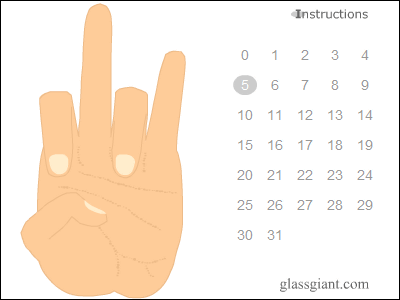Even with the same pictograms, it turns out that the degree of feeling in the negative / positive is considerably different when the model is different

Even if you choose a pictogram "Showing teeth and laughing" when sending messages on iPhone, it often happens that Nexus receiving messages receives subtly different facial expressions of emoji displayed. A new investigation revealed that this phenomenon is misunderstanding among people who are communicating based on pictograms. Furthermore, there are differences in how to receive emotions even with exactly the same pictograph or person.
Investigating the Potential for Miscommunication Using Emoji | GroupLens
http://grouplens.org/blog/investigating-the-potential-for-miscommunication-using-emoji/
(PDF file) "Blissfully happy" or "ready to fight": Varying Interpretations of Emoji
http://grouplens.org/site-content/uploads/Emoji_Interpretation.pdf
For example, in the case of expressions such as "lifting the edge of the mouth and laughing including the eyes", there are the following differences depending on the platform. It's easy to understand that Google's emoji raises the edge of the mouth, but Apple and Facebook are rather stretched sideways by mouth, Samsung is showing up in the mouth and is laughing Each has different facial expressions.

Therefore, researchers reported to five or more of the emoticons of Apple, Google, Microsoft, Samsung, LG, "Do you show positive emotions or negative feelings" to minus 5 It was evaluated in 10 steps from plus 5 to 10.
The result is this.

As for the pictorial words "lift the mouth end and laugh, including eyes", the emoticons of Google, Microsoft, Samsung, LG are accepted in a positive sense if there is a difference in degree, while Apple's emoji It is received in a negative sense. In other words, even if an iPhone user sends an emoticon with a slightly negative meaning, Nexus users who receive an emoji will receive a positive connotation. Of course, the reverse also happens. According to the survey, 9 out of 22 pictograms seem to have had a difference of 2 points or more in the degree of emotion between the two terminals.
Also, at Apple, it is also known that "praise both hands" pictograms converted from words "stop" and "applause" are translated from the words "praise" and "hand" by Google.
Furthermore, even if you see the exact same pictorial symbol using the same terminal, I also know that the way people receive emotions varies from person to person. In the graph below, it is a graph showing what emotional expressions people will receive as "Apple laughing and laughing including eyes" pictograms by Apple. You can see that there are large variations in receiving as negative emotions or receiving as positive emotions.

The investigation showed that when sending and receiving pictograms on different platforms, there was a difference of 2.04 points on average between emotions between senders and recipients, even if the platforms are the same, the average difference is 1.88 points That there is. When using pictograms it seems necessary to pay attention to the above points.
Related Posts:







